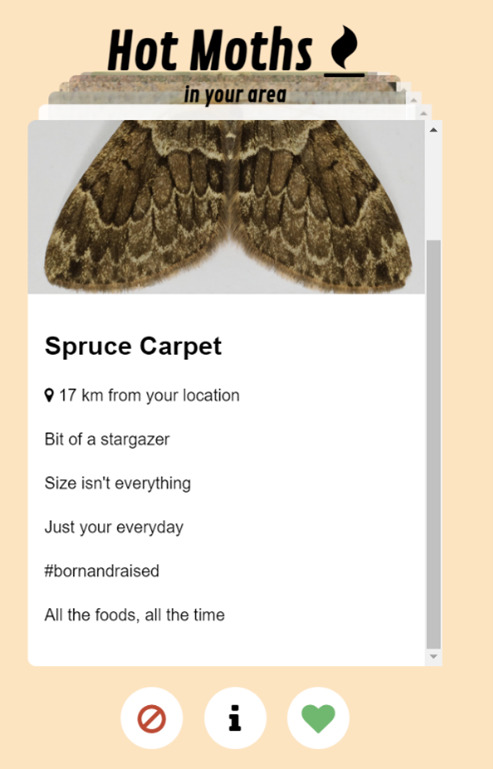#CDE22 – Hackathon Triumph for Biodiversity Sculpture
19/07/2022

We have just completed running for NERC their first ‘Constructing a Digital Environment’ (CDE) conference ‘#CDE22’, hosted at the University of Birmingham from 10-12 July 2022. A hackathon was run in parallel with the conference on the theme of “Bridging data sciences and the public with art” with the aim of turning environment data into an art form.
We are delighted to report that Dr Tom August has been declared winner following a unanimous judges’ decision and is awarded the top prize of £3,000. His artwork, An Incomplete Picture explores the biodiversity crisis in the UK based on the data in NERC’s EIDC, highlighting the limitations of that data that mean “that our estimates of the species’ trends is very uncertain, and for other species we have no data at all, we simply don’t know what is happening to them.” Tom manipulated the statistical data into word clouds that were engraved onto birch plywood with clarity of the words signifying uncertainty and with gaps of clear acrylic indicating missing data, all enclosed in an incomplete walnut veneer frame.
The judges, Prof. Albert Chen, Prof. Stephen Hallett, Prof. Keiichi Nakata, Prof. Iseult Lynch, Emma Bee and Carl Watson all felt that Tom had clearly demonstrated a clever idea for communicating scientific information with the public via an inspiring art piece, and fully merited the first prize.
The Hackathon, run by Prof. Albert Chen and Barry Evans of Exeter University, commenced at 3pm on Sunday 10th July and ran until the end of the conference on Tuesday 12 July. Unusually a hybrid format was attempted, with a small number of participants engaged in the room, but the majority participated remotely. The aspiration for more in-person participants was perhaps thwarted by the Sunday start, the hot weather and various travel disruptions. The 17 participants eventually resulted in 5 high quality team and individual submissions, that have been judged over the last week.


The runner up, winning a prize of £1,500, was Hot Moths! by Simon Rolph and Matt Brown, a piece of art that helps users appreciate the diversity in an underappreciated taxonomic group.
Third place, with a prize of £500, was awarded to Exposome: showing how climate change impacts global health by Mehdi Khoury, Alex Chatzistefanou and Gordon Rates. They provided a very informative visualisation website allowing users to learn the climate change impact on human health.
The remaining two entries were Microplastics by Shreya Badchariya – a poem and infographic to highlight the microplastics issue in River Thames – and EstuaRisk by Chien Nguyen, which offered an interactive web map to inform the public about flood risk.
Most entrants were able to participate in a 5-minute “show and tell” session in front of the #CDE22 conference audience in their final session on Tuesday afternoon, which was greatly enjoyed by all. Delegates were impressed by how much had been achieved in just 48 hours. We are grateful for those who took time out to do this in the last hours before the submission deadline!
Our Twitter posts of the hackathon events went out tagged #CDE22.
Categories & Tags:
Leave a comment on this post:
You might also like…
Keren Tuv: My Cranfield experience studying Renewable Energy
Hello, my name is Keren, I am from London, UK, and I am studying Renewable Energy MSc. My journey to discovering Cranfield University began when I first decided to return to academia to pursue ...
3D Metal Manufacturing in space: A look into the future
David Rico Sierra, Research Fellow in Additive Manufacturing, was recently involved in an exciting project to manufacture parts using 3D printers in space. Here he reflects on his time working with Airbus in Toulouse… ...
A Legacy of Courage: From India to Britain, Three Generations Find Their Home
My story begins with my grandfather, who plucked up the courage to travel aboard at the age of 22 and start a new life in the UK. I don’t think he would have thought that ...
Cranfield to JLR: mastering mechatronics for a dream career
My name is Jerin Tom, and in 2023 I graduated from Cranfield with an MSc in Automotive Mechatronics. Originally from India, I've always been fascinated by the world of automobiles. Why Cranfield and the ...
Bringing the vision of advanced air mobility closer to reality
Experts at Cranfield University led by Professor Antonios Tsourdos, Head of the Autonomous and Cyber-Physical Systems Centre, are part of the Air Mobility Ecosystem Consortium (AMEC), which aims to demonstrate the commercial and operational ...
Using grey literature in your research: A short guide
As you research and write your thesis, you might come across, or be looking for, ‘grey literature’. This is quite simply material that is either unpublished, or published but not in a commercial form. Types ...







